Assessing the sustainability of municipal solid waste management using life-cycle analysis
Published in Earth & Environment
Explore the Research
Just a moment...
Verifying you are human. This may take a few seconds.
Rapid urbanization and industrialization have drastically increased municipal solid waste (MSW) generation, posing serious environmental and public health challenges, especially in developing countries like India. The study focuses on Delhi, where solid waste management strategies have significant impacts on ecosystem quality, human health, climate change, and resource depletion. This paper evaluates and compares four MSW management scenarios using Life-Cycle Assessment (LCA) methodology, intending to identify the most environmentally sustainable approach.
Background and Importance
India’s municipal solid waste rules and initiatives strive to regulate collection, transport, treatment, and disposal. However, open dumping and unsanitary landfilling persist, creating severe environmental hazards through air, water, and soil pollution. Consequently, integrated waste management systems are essential for recovery, recycling, energy production, and eco-friendly waste disposal. LCA offers a holistic, system-wide environmental impact evaluation, accounting for every stage from waste generation to final disposal or recovery.
Methodology
Study Area and Waste Composition
Delhi, a densely populated and fast-growing city, generates approximately 10,050 tonnes of municipal solid waste daily. The composition of the waste is predominantly organic (50–55%), with paper, plastics, metals, and inert materials constituting the rest. This composition guides the preference for biological treatment methods such as composting and anaerobic digestion.
Life-Cycle Assessment Framework
Following ISO 14040 and 14044 standards, the LCA method breaks down the analysis into four stages: goal and scope definition, inventory analysis, impact assessment, and interpretation. The study uses the Impact 2002+ assessment method within Simapro software and the Ecoinvent database to evaluate environmental impact categories related to human health, ecosystem quality, climate change, and resource depletion.
System Boundary and Functional Unit
The analysis considers all inputs and outputs throughout the waste management life cycle, including transportation, sorting, treatment, emissions, energy recovery, and avoided products. The functional unit is defined as per tonne of MSW treated, assuming uniform waste characteristics across scenarios.
Scenarios
-
Scenario S1: Landfill with Composting (Baseline)
Sorting recovers recyclables (3%), and 17% of waste is composted. The remaining 80% is landfilled with no gas or leachate treatment. -
Scenario S2: Anaerobic Digestion (AD) with Landfill
After removing recyclables, 48% of waste undergoes AD for biogas and biofertiliser production, with 49% sent to landfill. -
Scenario S3: Incineration
Post-sorting, 97% of waste is incinerated to generate electricity. -
Scenario S4: AD with Incineration
Organic waste (48%) is sent to AD, and the rejected fraction (49%) to incineration, maximizing energy recovery.
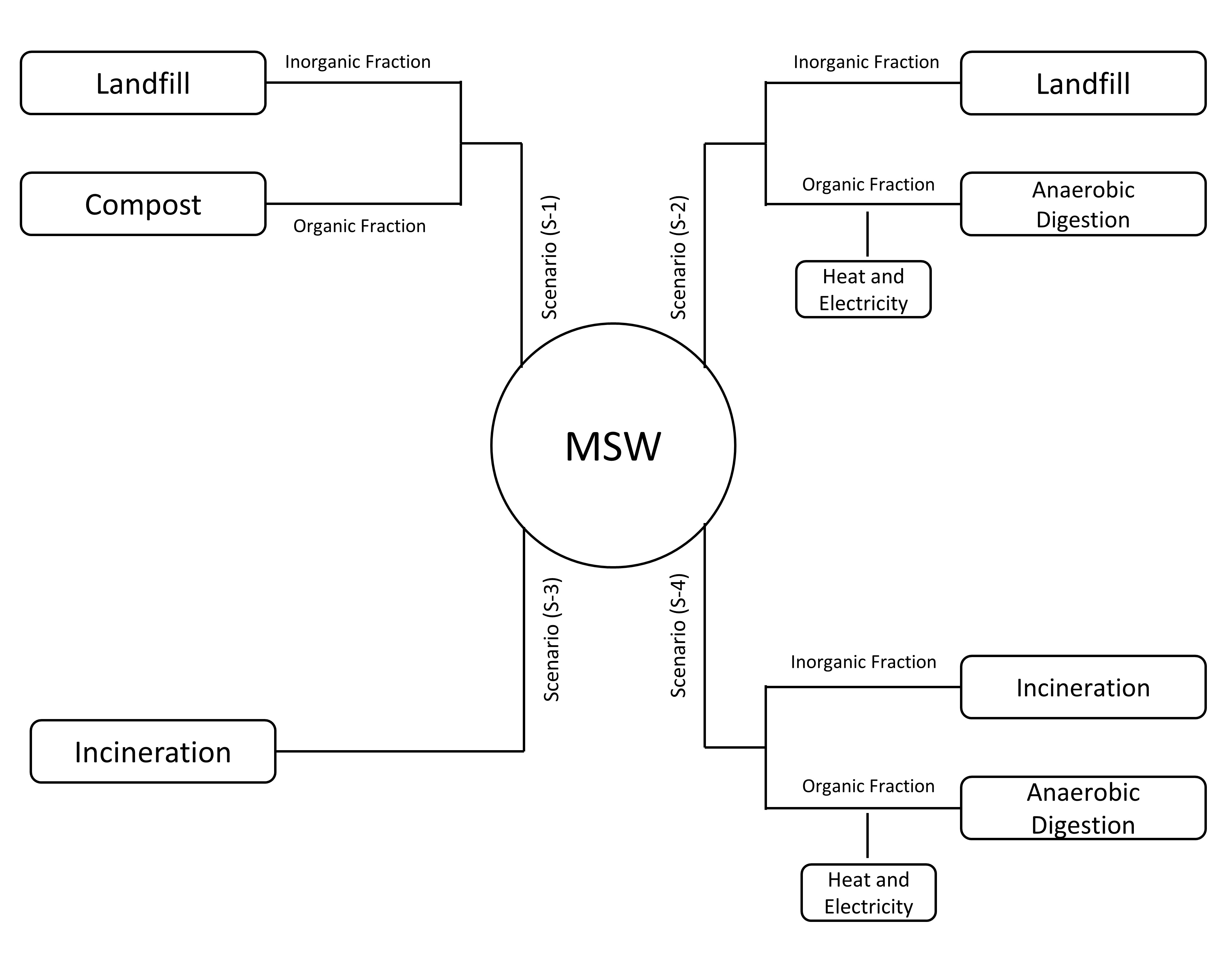
Life-Cycle Inventory
Inventory data include inputs like electricity and diesel consumption, transportation distances, and outputs such as emissions to air and water and avoided products like recyclables and biofertilizers. The study’s data source includes Delhi Municipal Corporation and published literature.
Results and Discussion
Human Health Impact
Measured by disability-adjusted life years (Daly), S1 (landfill with composting) has the highest impact on human health due to respiratory inorganic pollutants (PM2.5) and organic emissions. Scenarios involving AD and incineration (S2, S3, S4) show significantly reduced health impacts, with S4 (AD with incineration) being the most beneficial.
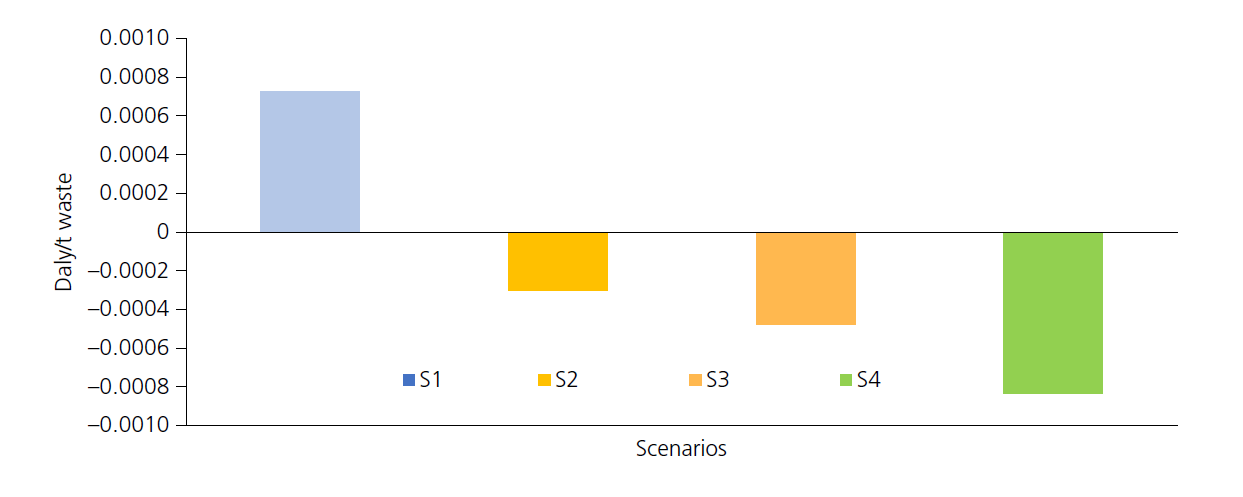
Ecosystem Quality
Though all scenarios negatively affect ecosystem quality due to emission impacts, S1 shows the least overall effect. This is attributed to the recovery of fertilizers and recyclables reducing avoided emissions. However, the study warns that S1’s environmental costs still outweigh its benefits due to other significant impacts.
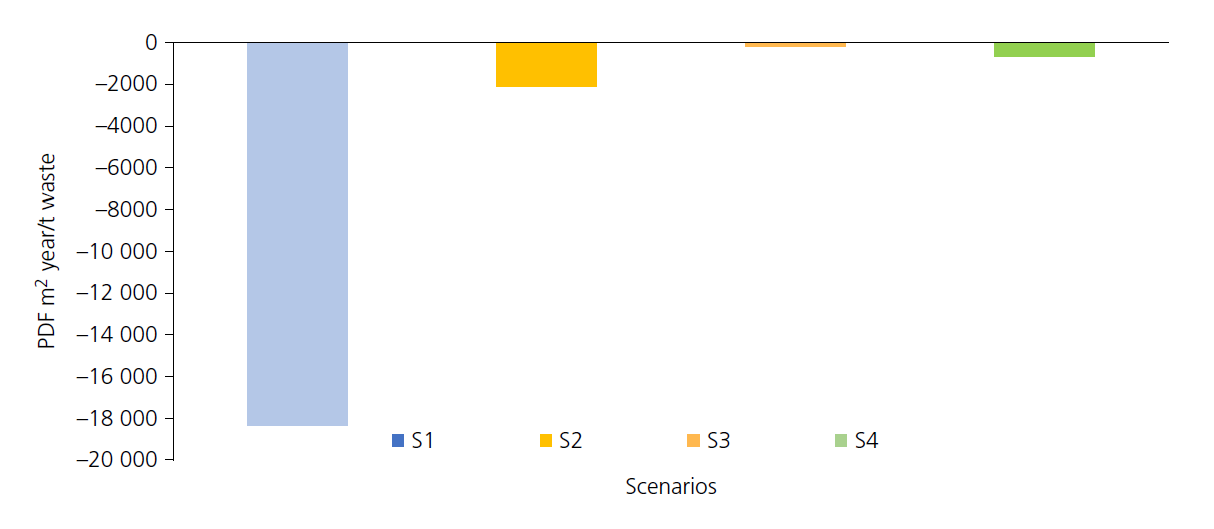
Climate Change
Global warming potential measured in CO2 equivalents shows S1’s landfill with composting to have the highest negative footprint, largely due to methane emissions and lack of gas recovery. Conversely, S4 yields a negative impact due to energy recovery offsetting fossil fuel electricity generation, marking it as the best scenario for climate change mitigation.
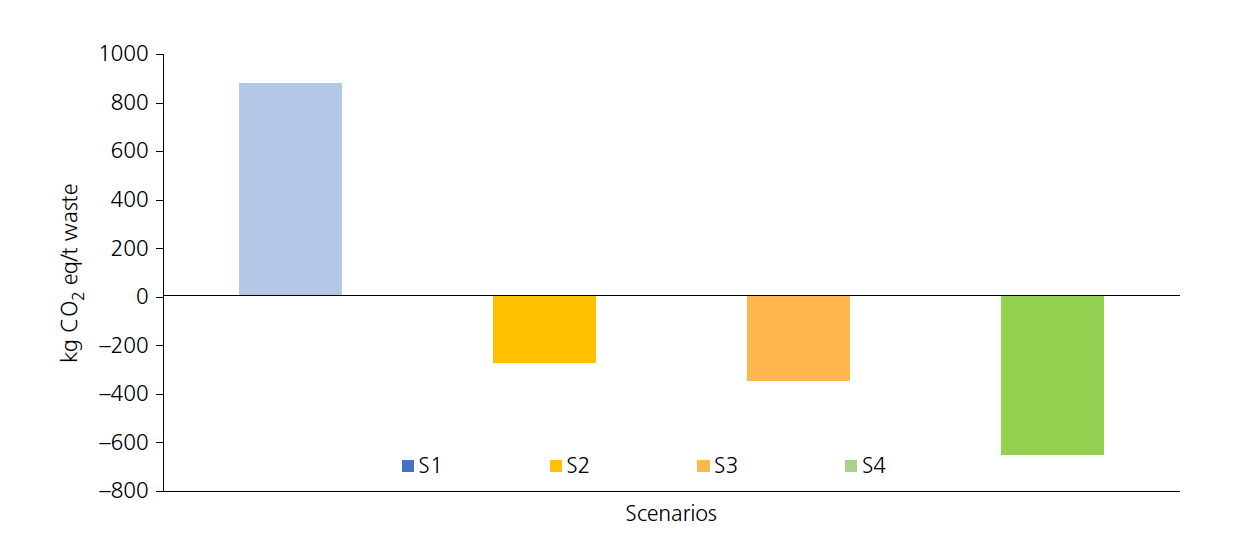
Resource Depletion
Considering non-renewable energy and mineral extraction, all future scenarios that incorporate AD or incineration show environmental benefits (negative depletion scores), with S4 outperforming all due to its combined energy recovery methods.
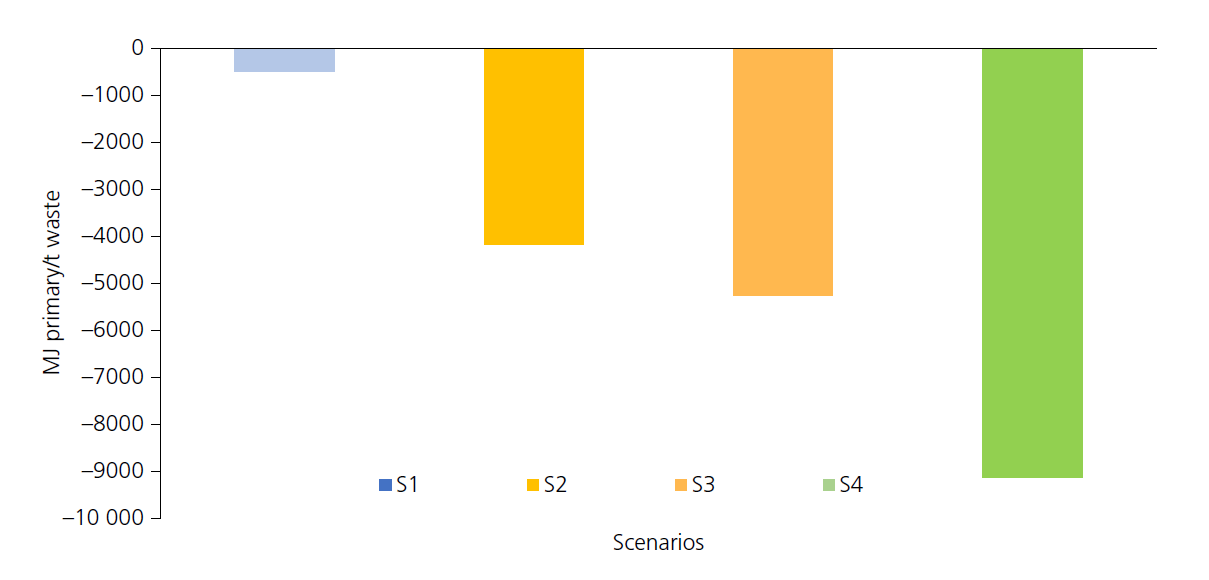
Normalization and Comparative Analysis
Normalized mid-point impact categories provide a unified scale for comparing all environmental effects. Across carcinogens, non-carcinogens, respiratory organics and inorganics, global warming, and resource depletion, S4 consistently scores best while S1 scores worst, further supporting the recommendation for AD combined with incineration.

Conclusion
Life-cycle analysis reveals that Delhi’s current landfill with composting method has the most detrimental environmental and health impacts. In contrast, a combined approach of anaerobic digestion and incineration (S4) offers the lowest overall environmental burden due to efficient energy recovery and reduced emissions. The study advocates for enhanced waste segregation alongside integration of energy recovery systems for future MSW management in India. It also highlights the need for more region-specific LCA inventory data to refine these assessments more accurately.





Please sign in or register for FREE
If you are a registered user on Research Communities by Springer Nature, please sign in